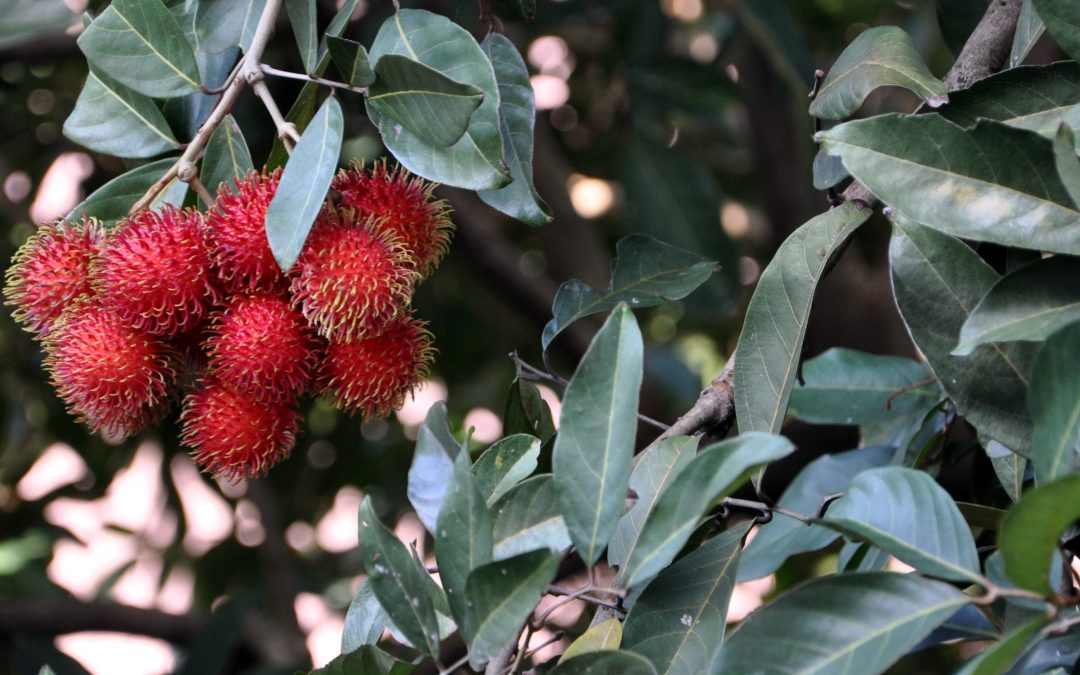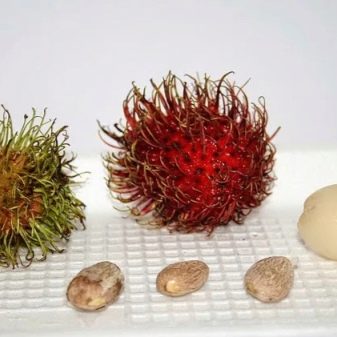The bright red balls of rambutan can easily be confused with lychee. And not surprisingly, these two exotic fruits are close relatives. But there is a cardinal difference: rambutan fruits are covered with soft, long hairs.
Table of Contents
Rambutan Tree Overview: Description, Height, and Size
The Rambutan tree is an exotic crop native to South and East Asia. This is a large tree, up to 20 m in height, with small but tasty and aromatic fruits.
Harvesting from tall trees is not an easy process, so breeders have developed low-growing varieties, up to 5 m in height.
Rambutan fruits are small bright red “hedgehogs” with green or red long soft “needles”; they contain white dessert pulp.

The Latin name of the tree is Nephelium lappaceum. Belongs to the Sapindaceae family, which has given the world many valuable exotic crops: longan, lychee, and mamoncillo. Maples belong to the same family, although they belong to a different subfamily.
Rambutan tree has many names: chom chom in Vietnam, ramboetan in the Netherlands, ramboutan in France, ramboostan in India.
The main name comes from the Malaysian rambut, meaning “hair”.
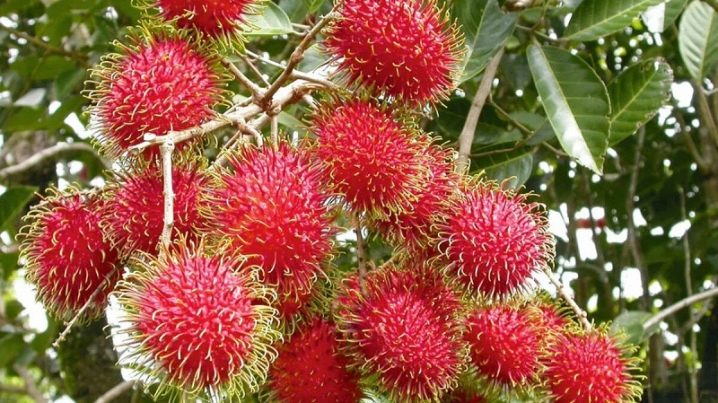
Rambutan Tree: Botanical Description
Nephelium lappaceum is a tall evergreen tree, reaching 15-25 meters in nature. The trunk is straight, up to 60 cm in diameter. The crown is spreading and dense. The leaves are compound, pinnate, up to 7-30 cm in length.
Each leaf has 2 to 8 slightly leathery oval leaflets. Petioles are reddish. The color of the foliage is yellowish-green or dark green, the leaves are slightly matte on the upper side, and bluish-green on the underside.
The flowers are small, inconspicuous, greenish-yellowish, without petals, collected in panicle inflorescences, appearing at the tips of the branches; during the period of fruit ripening, the tree seems to be covered with red splashes.
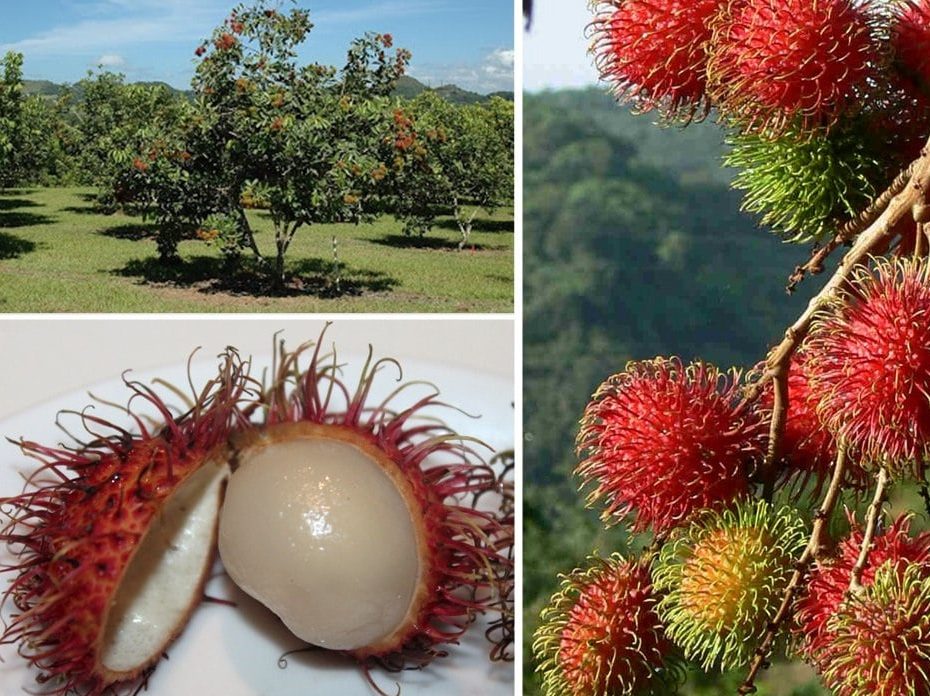
Flowers appear in spring, from late March to early June. In Malaya, the Rambutan tree manages to bloom and bear fruit twice a year: the crop is harvested in June and December.
The buds open early in the morning, are active for 1 day, and up to 100 flowers open simultaneously on the female panicle.
The flowers of the plant are hermaphrodites, functioning either as female or male. There can be two types of flowers on one Rambutan tree. Self-pollination is possible, but, as a rule, it is better to have male and female specimens in plantings.
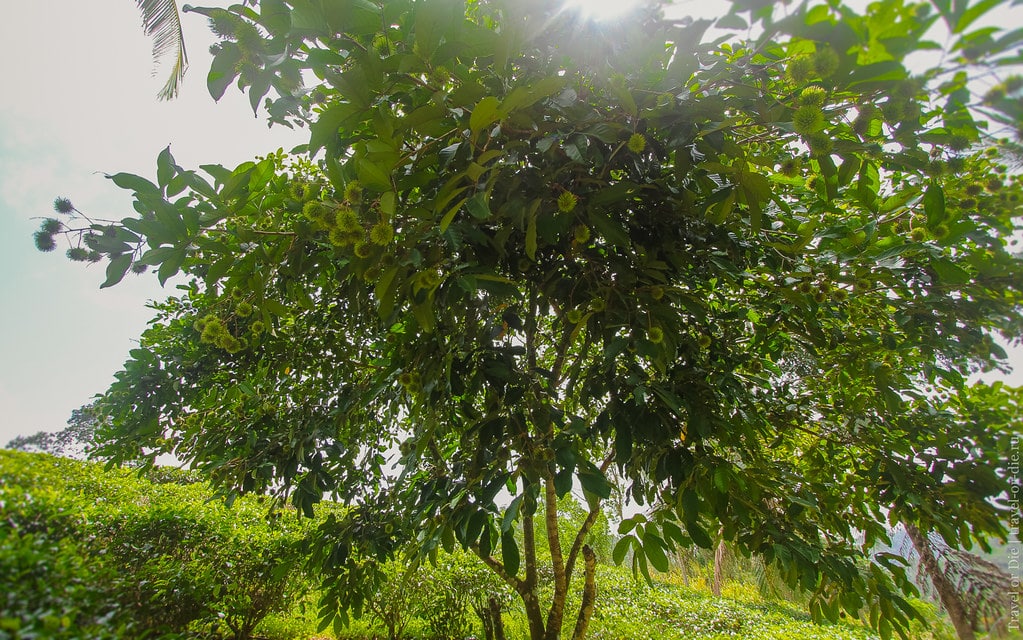
Male panicles can contain up to 3 thousand flowers; the ovaries do not function. Hermaphroditic panicles contain 500 flowers. Flowers of both sexes emit a faint odor; their nectaries work, although female flowers produce 2-3 times more nectar than male flowers.
The set rate is low, depending on the mix of plantings; approximately only 1-3% of female flowers set fruit.
The percentage can be increased by hand pollination.
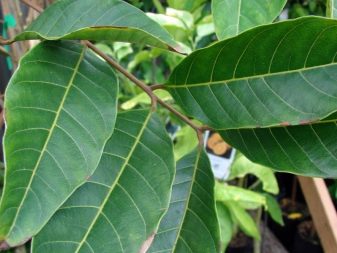
The fruits ripen 15-18 weeks after flowering. They are small, up to 3-6 cm, sometimes up to 8 cm in diameter, growing in clusters of up to 30 pieces. They are covered with a thin, dense skin with numerous tubercles, from which come soft, thin, but fleshy spines up to 0.5-2 cm long.
In some species the needles are straight, in others they are curved. As they ripen, the peel changes color from green to yellow-orange, then bright red. The color of the peel can vary depending on the variety: pinkish-red, orange-red, almost burgundy, dark purple. The shell is easily separated from the pulp.
The pulp is white, with a slight reddish tint, juicy, gelatinous consistency, and sweet and sour taste. Contains 1 large seed, up to 3.4 cm in length and up to 1.5 cm in width, oval in shape, with a brownish peel.
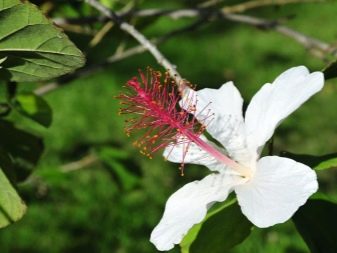
The fruits may ripen unevenly; on 1 branch you can observe a fully ripe fruit and 1-2 undeveloped ones, resembling a pea. They begin to bear fruit fully on average from 6-8 years of age, the period depends on the variety.
Productivity is uneven, with years of high yield and lower yield alternating. The fruits are cut immediately in clusters. If not all fruits are ripe, several approaches are required. The process of transition from green to red is quite fast, sometimes only 5-10 days, so the harvest must be harvested without delay.
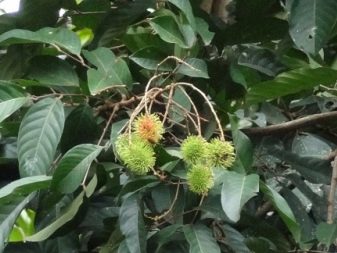
Rambutan Fruit Taste
Beneath the skin of the rambutan is a juicy, dense, jelly-like flesh that is white or creamy pink in color. The taste is fruity, bright, sweet, with a slight sourness, grape-strawberry. The consistency of the pulp resembles dense grape varieties. The aroma is light and fresh.
The fruits do not last long; it is best to consume rambutan straight from the tree. Rambutan is collected along with its branches; the fallen fruits are not fragrant enough.
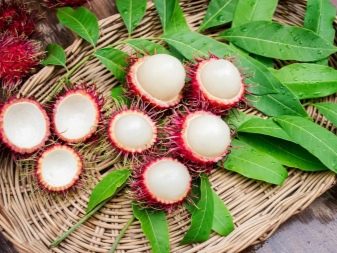
The best time for consumption is within 3 days; on the 4th day, the pulp loses its taste, which becomes bland and may resemble watery melon or pineapple. You can store rambutan for up to 7 days, until the hairs on the skin darken, at a temperature of +8… 12°C, humidity 90%. Unopened fruit is stored in the refrigerator for 7-10 days and peeled – no more than 2 days.
The fruit is easy to clean, just press on the seam on the surface of the fruit and stretch the “flaps” with your fingers. Sometimes a knife is used.
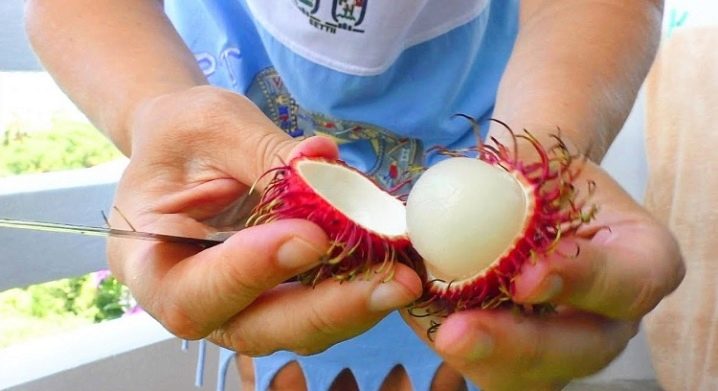
The pulp is not always easily separated from the stone, but this attribute is considered less important than the taste, so in markets you can often find fruits of varieties with a hard-to-separate stone. Sometimes you come across fruits without seeds, but this is an exception.
Distribution Area
The rambutan tree grows naturally in Southeast Asia and Malaysia. It has been traditionally grown near these regions for many years. The Arabs brought the Rambutan tree to Tanzania and Zanzibar. There are small plantations in India, Suriname, Ecuador, Honduras, Cuba, Costa Rica, and Colombia.
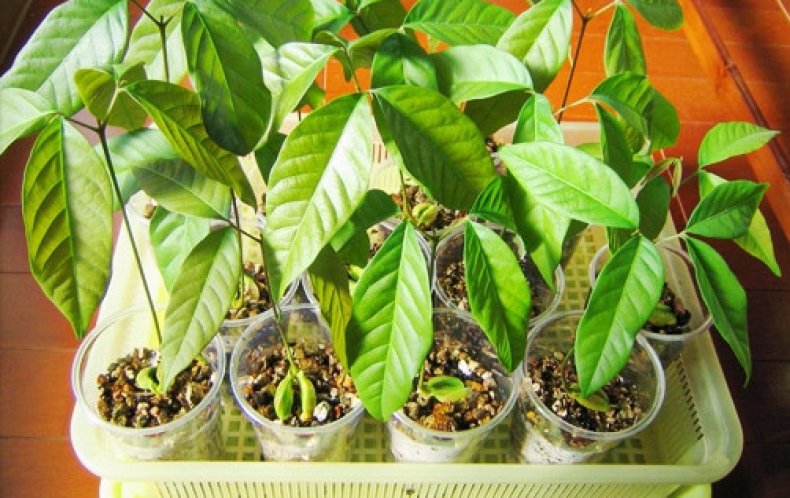
Coastal lowland areas are chosen for planting. In 1912, the Rambutan tree was introduced to the Philippines, where many commercial plantings appeared. The seeds of the plant came to the USA in 1906, from the island of Java.
Popular Rambutan Types
Nephelium lappaceum is an independent species; botanists do not distinguish its varieties. It is a member of the Nephelium genus, which has 25 flowering trees native to Asia. All of them are close to the rambutan tree in structure but have found almost no commercial use, although many have edible fruits.
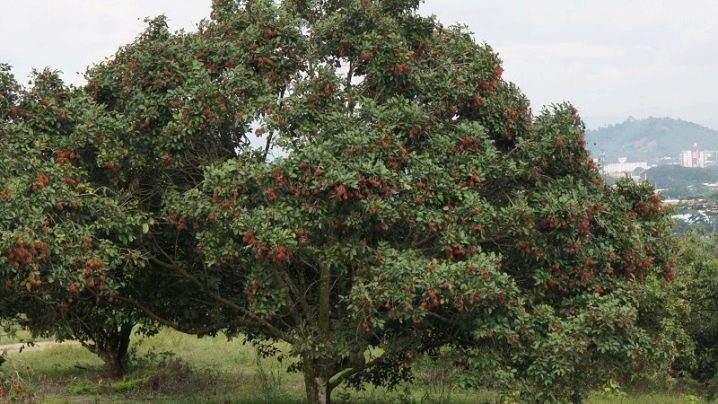
Conditions for Growth
Rambutan trees grow at 500-600 m above sea level in regions with a humid tropical climate and almost evenly distributed rainfall throughout the year. All industrial rambutan plantations are located no further than 15° from the equator.
The average air temperature in ideal conditions for wood is about +27°C, air humidity is 82%. Temperatures below +10°C are unacceptable for wood. The dry season lasts no more than 3 months. Trees like well-drained, rich sandy, or loamy soil.
Propagartion Features
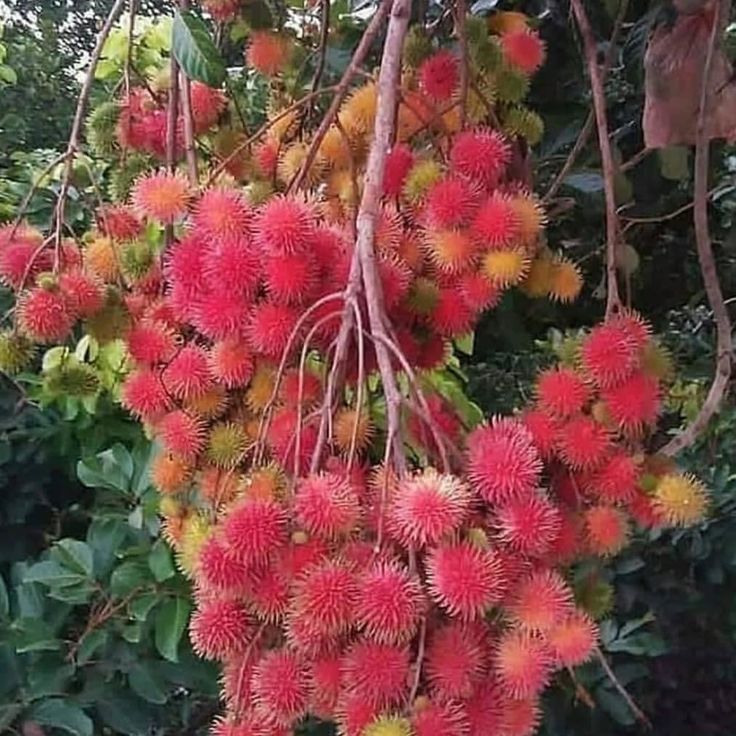
To grow a Rambutan tree at home, you will need to provide it with an even warm temperature of +18 … 20 ° C, and 12 hours of abundant light per day. Watering – as needed. The soil should not dry out. The plant does not like drafts. Grow from seeds.
The seeds are washed well and planted in loose soil. They germinate in 9-25 days, with fresh seeds the germination rate reaches 95%; a week after extraction from the fruit, only half of the seeds will germinate, at best 65%. It is better not to plant seeds that have dried out in the sun; they will not sprout.
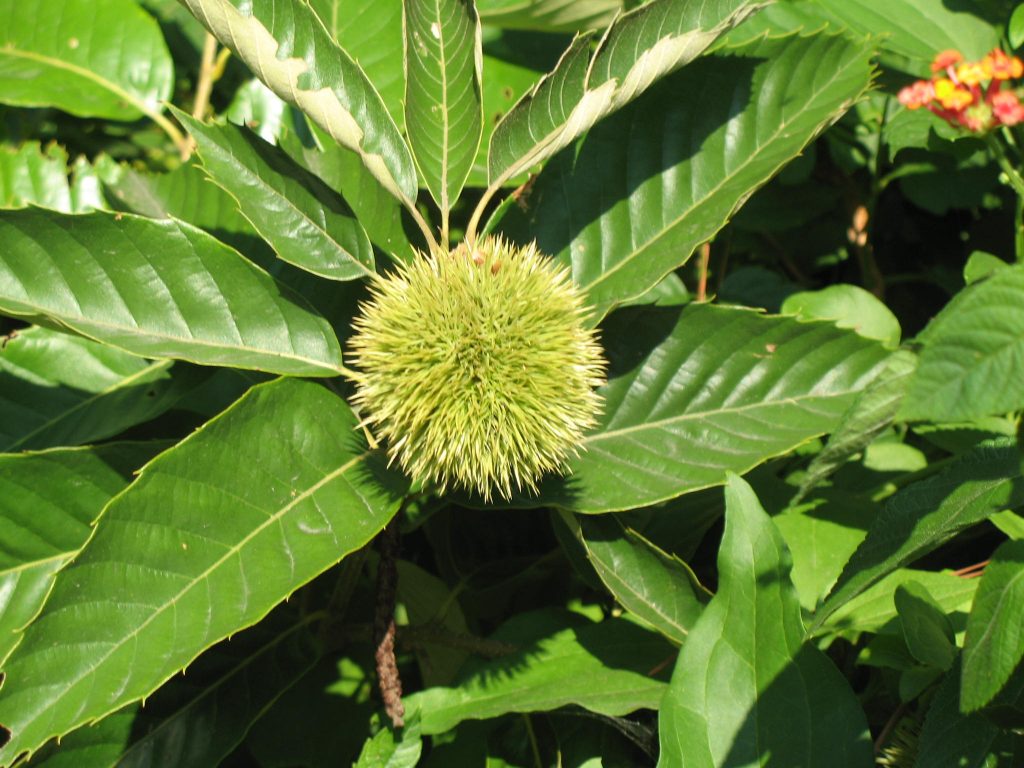
The seedlings are vigorous and can bear fruit within 5-6 years. When planting on commercial plantations, the number of male and female Rambutan trees is taken into account. When grown from seeds, more than half of the seedlings turn out to be male specimens.
Vegetative propagation and grafting are possible; such trees bear fruit in 2-3 years. Seedlings are planted at a distance of 10 m from each other.
The Rambutan tree almost does not need pruning; it is carried out only for slight correction of the shape or removal of damaged branches.
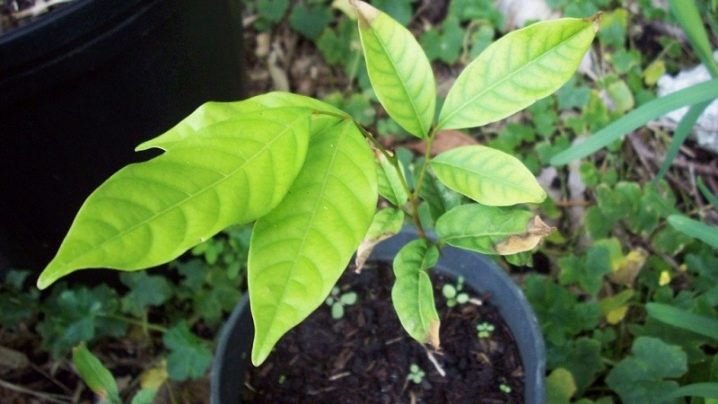
Use in Landscape Design
Rambutan trees are quite beautiful, and have a spreading crown with lacy foliage. The plantings are picturesque, especially during the fruiting period.
In South Asia, the Rambutan tree is planted in commercial plantations and private gardens.
Rambutan tree in mid-latitudes is grown as an indoor or greenhouse plant.
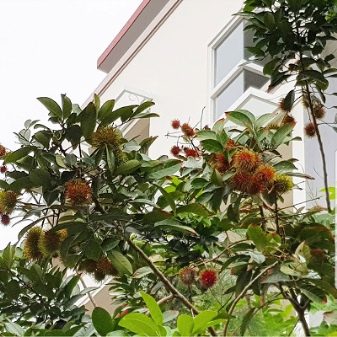
Economic Importance
Rambutan fruits are consumed fresh or canned. The volume of fresh fruit imports around the world reaches 300 million US dollars per year. For comparison, the volume of lychees is more than 440 million US dollars per year. Rambutan is valued for its freshness, exoticism, lightness, dessert taste, and low-calorie content.
One fruit is 82 kcal. Contains a lot of moisture, per 100 g of pulp – 74-78 g of water, so it perfectly quenches thirst. It is a good source of manganese (up to 16% DV), vitamins A, and B vitamins, thiamine, riboflavin, nicotinic acid, folic acid, and pantothenic acid.
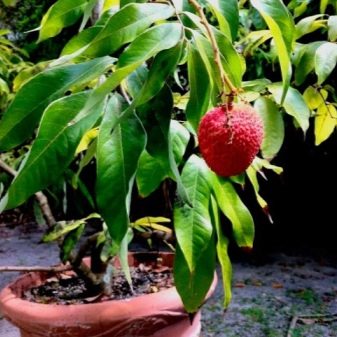
The vitamin C content is moderate; 100 g of rambutan contains 6% of the daily value of an adult.
Rambutan fruits are preserved in syrup with sugar and added to marinades, sauces, and salad dressings. They are also stewed or made into preserves, jellies, and jams. The fruit is mostly consumed fresh, but it is great for making desserts.
The best of them is Che Khuc Bach, “Vietnamese panna cotta.” It’s great for drinks. Smoothies and cocktails are prepared with rambutan; the fruit goes well with pineapples and coconuts. The seeds are poisonous when fresh, but when roasted they are sometimes eaten in the Philippines.
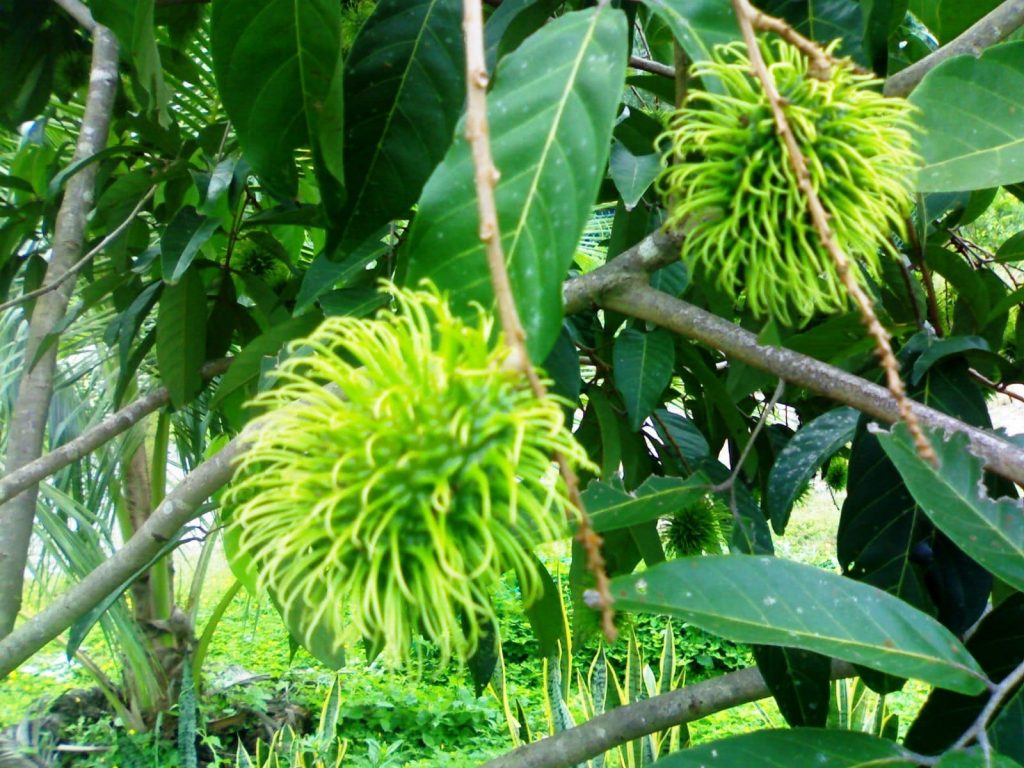
The roots, bark, and leaves of the rambutan tree contain coloring and active substances. They are used to make natural dyes and in folk medicine. Unripe fruits have an astringent, antipyretic, and anthelmintic effect. Dried fruit peels can be purchased from pharmacies in Malaya.
The seeds contain up to 43% solid white oil, similar in appearance to cocoa butter. It has a pleasant smell and contains valuable fatty acids.
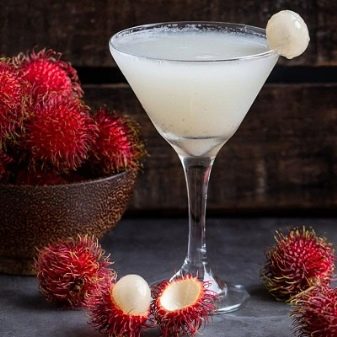
The oil from the seeds is used to create cosmetics. Supposedly it can be used to make candles or soap, but there is no evidence of commercial production. The Rambutan tree has high-quality wood with a beautiful red-brown color, but it is rarely harvested.
Interesting Facts
Rambutan is considered the smallest fruit on earth. Its weight is 20-25 grams, which is 1700 times less than the weight of the largest fruit – jackfruit. No trip to Thailand is complete without experiencing rambutan. This country is a leader in the commercial production of fruit, and beautiful spreading Rambutan trees with red balls are found everywhere.

